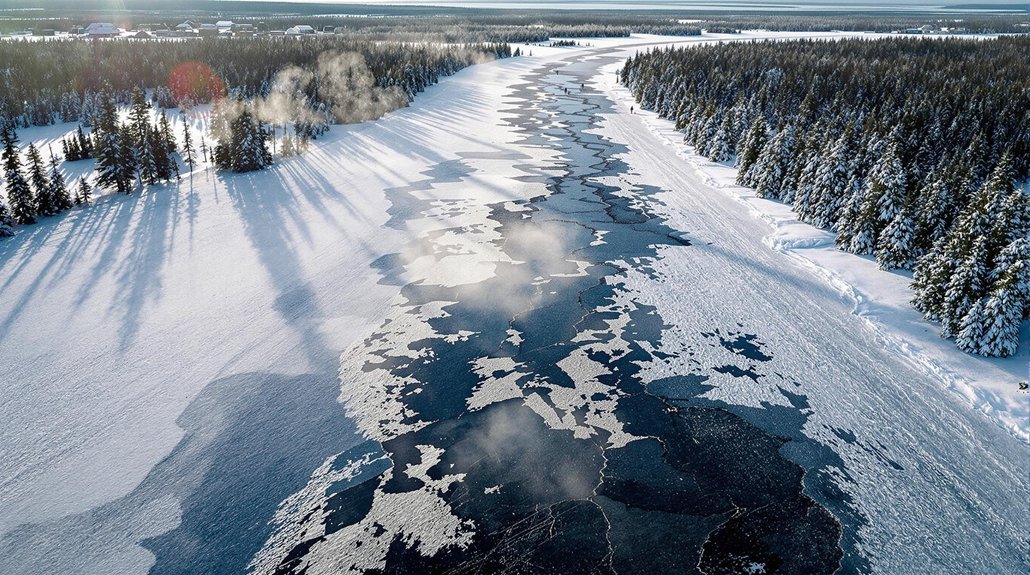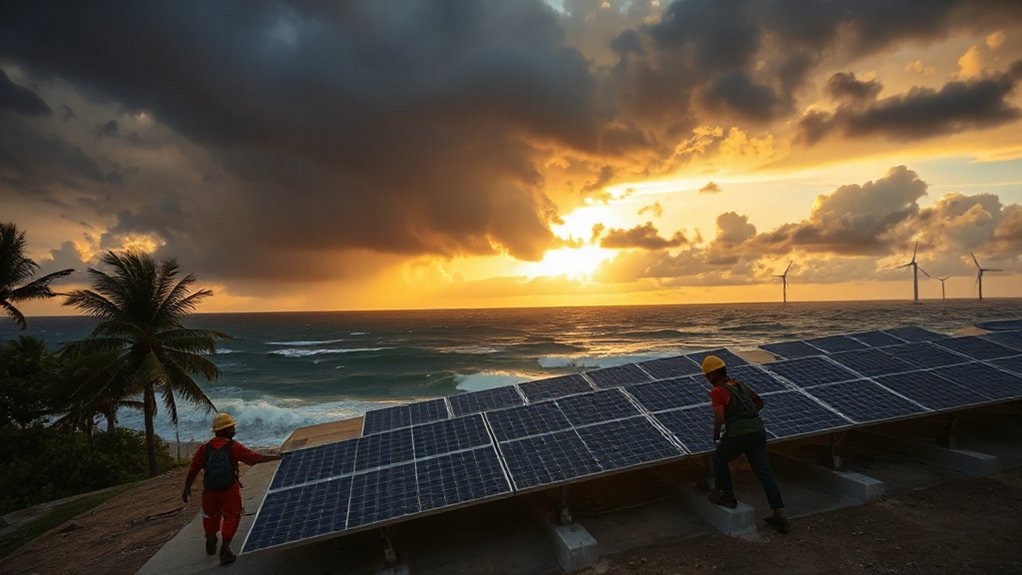As global temperatures continue to rise, coastlines around the world face an unprecedented threat from rising sea levels. Scientists report that global sea levels have already risen 8–9 inches since 1880, with the rate of increase accelerating due to melting glaciers and ice sheets. This trend isn’t slowing down, and many experts now warn that current climate targets may be insufficient to protect vulnerable coastal areas.
Climate change is unleashing a relentless assault on coastlines as accelerating sea levels threaten vulnerable communities worldwide.
The situation is particularly concerning for the United States, where coastlines are expected to experience sea-level rise faster than the global average. In the next 30 years alone, sea levels along U.S. coasts are projected to rise about 11 inches—matching the total rise experienced over the entire previous century. The Western Gulf regions face even greater challenges, with potential increases of 16–18 inches by 2050.
The consequences of rising seas extend beyond simple flooding. Coastal erosion threatens communities, resources, and infrastructure worldwide. Sandy beaches are especially vulnerable, with 70% already experiencing erosion. Only 10% of beaches are actually gaining sand. This erosion leads to property loss, saltwater intrusion into freshwater supplies, and increased flood risk during storms.
The burden of these changes won’t fall equally on all regions. Low-lying coastal nations and small island developing states face disproportionately severe impacts. Rising seas will likely worsen existing socioeconomic disparities both between and within countries. Globally, over 70 million people will be exposed to expanding coastal floodplains by 2100 without significant action. Small Island Developing States like the Bahamas, Maldives, and Tuvalu are projected to lose 5% of their land to permanent inundation by the end of this century.
The long-term outlook depends heavily on current emissions choices. Under high emissions scenarios, global sea levels could rise by as much as 12 feet by 2150 if rapid ice sheet collapse occurs. Recent studies have shown that extreme weather events, particularly typhoons and hurricanes, are accelerating coastal erosion rates by over 14% compared to normal periods. The situation echoes the vulnerabilities seen in renewable energy systems to climate variations, which are affecting established power sources across regions. Proactive emission reductions would provide more time for adaptation and potentially reduce the severity of impacts.
Despite ongoing adaptation efforts like seawalls and managed retreat, scientists emphasize that reducing emissions remains vital. Without dramatic cuts, coastal flooding events may increase fivefold this century, transforming many of the world’s coastlines beyond recognition.
References
- https://www.climate.gov/news-features/understanding-climate/climate-change-global-sea-level
- https://www.undp.org/press-releases/climate-changes-impact-coastal-flooding-increase-5-times-over-century-putting-over-70-million-people-path-expanding-floodplains
- https://www.sciencedirect.com/science/article/abs/pii/S0301479725000015
- https://nca2023.globalchange.gov/chapter/9
- https://pmc.ncbi.nlm.nih.gov/articles/PMC10875370/








